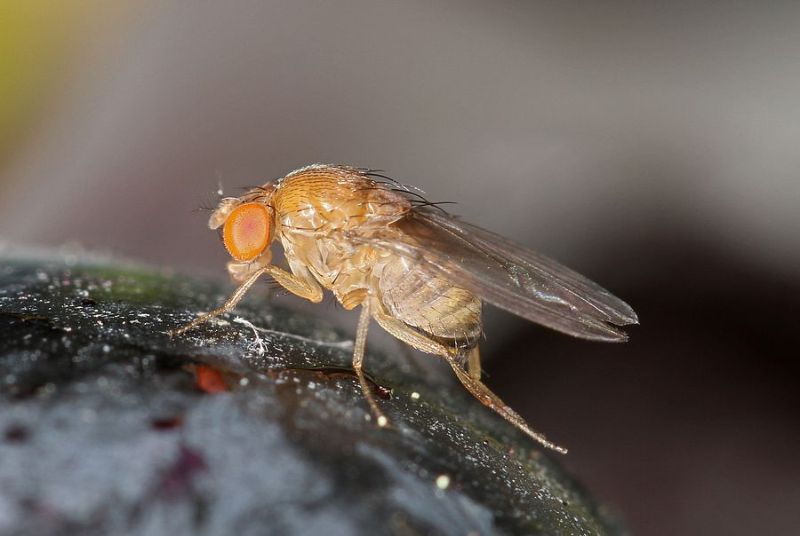The spotted wing drosophila: also a major forest pest
It heavily infests the fruit of various forest plants and potentially causing considerable ecological damage. Berry pickers are also directly impacted, as such infestations result in a scarcity of juicy bilberries and elderberries.
Originating in Southeast and East Asia, the spotted wing drosophila (Drosophila suzukii) measures between 2.5 and 3.5 mm and was introduced to Europe in 2008, where it has since caused major crop failures for fruit and wine growers, attracting a lot of attention. Research has so far focused on agriculture, implying that this insect can only damage agricultural crops.
Invasive species (i.e. species that spread rapidly and dominate ecosystems) can alter natural habitats as well as ecosystems and can also displace native species. However, there is currently a lack of information on how often the alien fly occurs in Swiss forests, which fruit it infests, the scale of SWD infestations, and its impact on the forest ecosystem. The Cantons of Zug and Zurich therefore rolled out a project to address this, with scientific consulting being provided by WSL.
Major infestations observed in various forest plants
As part of the study, an environmental consultant from the Ökobüro Biotopia studied the occurrence of the SWD and damage to forest fruits on 64 sites from mid-June to mid-October 2020, checking a total of 12,000 fruits for SWD oviposition. SWD infestations were found on fruit from 31 of the 39 potential host plants studied.
The insect had heavily infested some forest plants; in 19 plant species, the flies had laid eggs in over half of all fruit. The spotted wing drosophila was also particularly attracted to those forest fruits popular with berry pickers (e.g. blackberries, bilberries, raspberries, elderberries). "This has a massive impact," says Irene Bühlmann from Ökobüro Biotopia. "Infestations were observed on 83% of common elders, meaning that the SWD had probably infested almost 60,000 of the estimated 70,000 elderberries on all study sites." Up to 95% of all fruit flies caught in insect traps on the study sites were SWDs, demonstrating how common and extremely dominant this alien species is in comparison with native flies.
Far-reaching ecological consequences
The widespread prevalence of this alien fly in forests and the major infestations of forest plants have consequences, explains Martin Gossner, head of WSL's Forest Entomology group, which provided scientific support to the study. "Although it is known to cause economic damage in agriculture, the spotted wing drosophila also inflicts ecological damage on forests. It diminishes the food sources of fruit-eating animals, curtails the seed dispersal of heavily infested plants and displaces native fly species. The SWD also puts us humans off picking delicious forest fruit."
Oviposition destroys the mechanical protection provided by the skin of the fruit. The fruit is then infected with microorganisms and moulds, on which fly larvae feed. Infestations accelerate decay, and the fruit rots and becomes inedible. Given the large number of infested berries, serious ecological consequences cannot be ruled out. Many animals, such as birds, depend on fruit as a food source and also play a vital role in the proliferation of fruit-bearing plants. Infested plants are therefore at a substantial disadvantage when it comes to their dispersal and long-term survival.
As yet there has been no conclusive explanation of the fly's exact ecological impact, and it is unclear how to effectively combat this insect. Potential solutions include silvicultural measures, such as promoting groves bearing fruit that may hamper the development of the fly, or encouraging natural adversaries in the forest. "We need to better understand which factors benefit the spotted wing drosophila in order to be able to take action," explains Gossner. According to him, this study's recent findings and publication in the Wald und Holz journal for forest specialists marks the first key step towards finding a solution.
